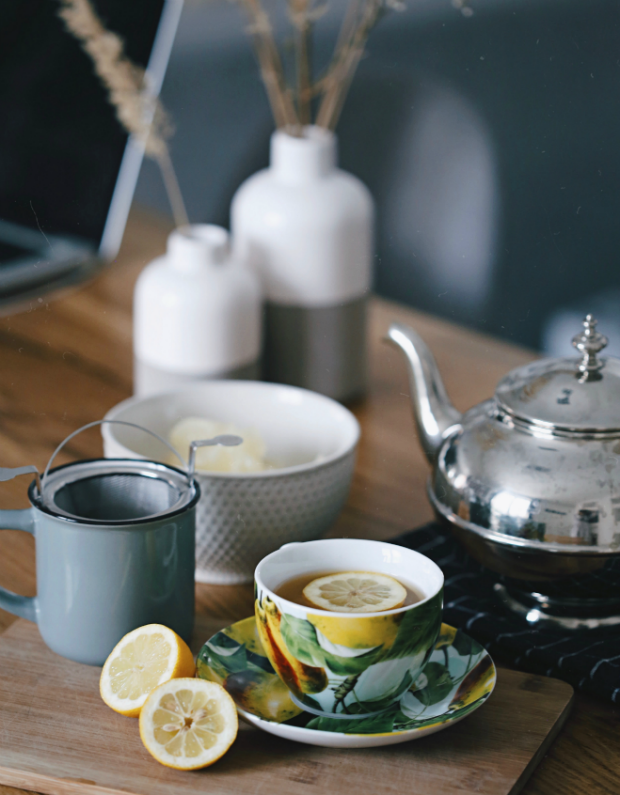Recently, I was helping a colleague declutter. Upon unpacking a cabinet in the boardroom full of migrated kitchen crockery, I discovered a dusty white teapot, its belly still filled with polystyrene bubbles. When I asked my colleague about removing it, she extolled her love for how she always fancied tea-drinking rituals, but that meetings were always too hasty. My mind has stayed with the teapot ever since.
Our nine-to-fives, meetings and to-do lists are fuelled by quick coffees. Even our times spent connecting with friends are locked in over coffee dates. So why, when it seems like everyone is yearning for ‘slow’, do we opt for the drink that makes us go faster?
It’s my perception that coffee-drinking encourages a more output-based view on life, while tea-drinking (specifically with a teapot, to encourage the ritual) feels like input-based living. At a quick glance there’s some interesting overlap between the world’s highest coffee-drinking countries and those with the highest productivity. (Finland, Norway, Sweden, Denmark, Netherlands and Germany appear on both lists.) But here’s why I think tucked-away teapots have something richer to offer our working weeks.
ALSO READ: Everything you’ve always wanted to know about your cuppa
The teapot is a vessel for unfolding
Inviting the teapot to the table creates a literal vessel between us to let things develop at a gentler pace. The silent infusion of tea sets a precedent for listening and observation. They’ve known this for centuries in Japan, where it’s unheard of for meetings – be they professional or social – to unfold without tea. The teapot invites decorum
With one person assuming custodianship over the making and pouring of the tea, it gives everyone else the opportunity to be served, forging a connection in service of us becoming guests and hosts to our own conversation.
Tea-drinking ceremonies in Japan are symbolic of peace and harmony, and pouring the tea is an honour and gesture of respect as much as receiving the brewed tea is.
The teapot creates unity
Being able to have our individual beverages just the way we like them is convenient. But if we sacrificed a little convenience for the cohesion of sharing the brew in a teapot, our focus would shift to what we have in common instead of how we differ. Much of our ‘every man for himself’ attitude would make room for a ‘part of the tribe’ mentality. Of course, you could argue that sharing coffee from a French press would offer the same benefits as the art of the teapot. But it’s the contents of the teapot as much as the art in which it is shared that adds to its measured effects.
In addition to caffeine, tea contains an amino acid called L-theanine. This chemical initiates two effects on your body: it lowers the rate at which you absorb caffeine and stimulates GABA neurotransmitters in the brain, which creates a soothing anti-anxiety effect. With a teapot at the table, you’ll be alert but calm; as opposed to the buzz that coffee offers. Bringing the art of the teapot back into our social and professional circles seems like a holistically nourishing way of moving through our busy days; getting things done without becoming undone.
ALSO READ…
11 Beautiful recipes for a high tea at home
Who says you can’t have an elegant high tea at home? (image: Unsplash) A high tea is a chic and elegant occasion, with florals and tea gracing your table and those oh-so moreish dainty treats and finger foods. High teas can often be expensive and there’s no reason why you shouldn’t host one yourself.
Images via Unsplash | Getty Images

